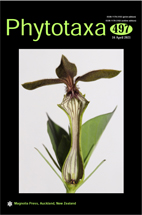Abstract
In Brazil, the family Araceae has 47 genera, approximately 519 species, 276 of which are endemic, it is characterized by the presence of the spadix associated with a bract, the spathe, and its one of the families with the highest species richness for the Atlantic Forest. This survey aims to inventory the Araceae of the Serra do Brigadeiro State Park (PESB), providing identification keys, descriptions, photos, and illustrations of diagnostic characters of the species, contributing to the Araceae Flora for Minas Gerais. To collect data, field trips were carried out in November 2018, July 2019, and February 2020, and the collected materials were deposited in the UNOP and RB herbaria. A total of 13 species, belonging to three genera, were documented. The genus Anthurium was the most diverse with eight species, followed by Philodendron with four species and Asterostigma with only one species. Through this survey, two species of Anthurium were found (A. atrovinosum and A. brigadeiroense) and recently described. Also, A. comtum, A. gladiifolium, and P. edmundoi are new for this area, and A. fontellanum was collected for the first time since 2004, reinforcing the importance of floristic studies and the conservation of Atlantic Forest remnants, such as the PESB.

